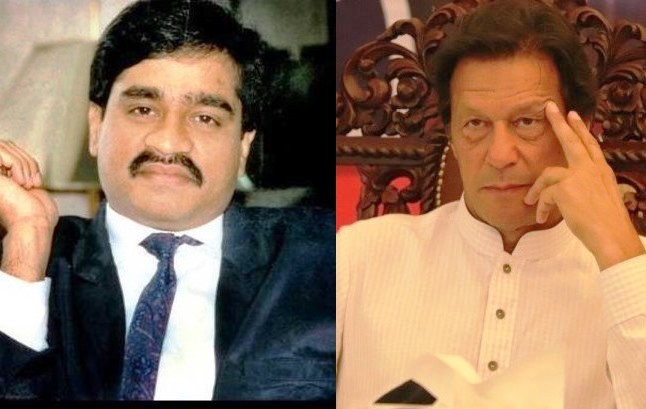By Francesca Marino
Rome [Italy], October 20 (ANI): October arrives and with it the usual Sword of Damocles hanging on Pakistan’s head: the FATF meeting. The organisation has to decide if Pakistan should be excluded from its grey list, based on a review of Islamabad’s performance to meet global commitments and standards on fight against money laundering and terror financing.
In August, Imran Khan had warned that if blacklisted, Pakistan’s entire economy will be destroyed due to inflation and a massive fall in the Pakistani Rupee, and his government had passed the umpteenth bill imposing financial sanctions on 88 terror groups and on Mohammed Hafiz Saeed, Masood Azhar and even the mafia don (and note, Pakistan always denied his presence in the country) Dawood Ibrahim.
The sanctions, to be fair, have been imposed a number of times, while immediately after their imposition the Pakistani mission in New York was applying for permission to de-freeze the bank accounts of Masood Azhar and Mohammed Hafiz Saeed because, poor fellows, they needed money to support their families. Pakistan was placed on the Grey List by the FATF in June 2018 for its failure to curb the funneling of funds to terror groups like LeT and JeM, and was given a plan of action to complete by October 2019.
The FATF plenary had then noted that Pakistan addressed only five out of the 27 tasks given to it in controlling funding to terror groups and strongly urged Pakistan to complete its full action plan by February 2020. In February, the FATF gave Pakistan, which missed 13 targets, a four-month period to complete its 27-point action plan. But in June, due to the COVID-19 pandemic, the FATF decided to postpone the evaluation and to keep Pakistan on the grey list because anyway Islamabad failed to check the flow of money to terror groups like Lashkar-e-Taiba (LeT) and Jaish-e-Mohammed (JeM). And the situation, despite the usual cosmetic measures, is not improved. Quite the opposite, in fact.
In August and in September Islamabad amended 15 laws and passed four bills to meet the international standards required by the FATF, and sent a report to the review team detailing the compliance with the 13 points in which the country was failing. But the FATF should keep in mind, once for all, that reality on the ground is much, much different from what it is written on paper. “Jaish-e-Mohammed (JeM) and Lashkar-e-Taiba (LeT) facilitate the trafficking of terrorist fighters into Afghanistan, who act as advisers, trainers and specialists in improvised explosive devices. Both groups are responsible for carrying out targeted assassinations against government officials and others,” so stated a UN Security Council report not so long ago, mantaining that both LeT and JeM are still sharing training camps with Taliban.
The same report of UN Security Council, clearly stated: “Relations between the Taliban, especially the Haqqani Network, and Al-Qaida remain close, based on friendship, a history of shared struggle, ideological sympathy and intermarriage. The Taliban regularly consulted with Al-Qaida during negotiations with the United States and offered guarantees that it would honour their historical ties.” That Pakistan controls Haqqani Network is no secret, and even children know that JeM, LeT and Taliban are all ISI creatures. And, according to sources, for more than a year Taliban are regrouping in Pakistan and being allotted again areas of influence as denounced many times by local citizens and members of PTM.
In the past few months, they are forming also brand new groups, and the latest one seems to be a ‘Khattak Taliban’ group. “Immediately after the so-called ‘peace agreement’ between US and Taliban, the Pakistani ISI has formed a new jihadi group to fight in Afghanistan against the government forces and, if needed, against other Taliban groups. This group is called Khattak, and his members belong to the poorest districts of KPK,” says a local.
These groups are trained, according to local sources, in training centers based in Upper Dir, in Kachlak and in Miran Shah by Jaish-e-Mohammed and Haqqani members and by the Taliban themselves, and then sent to Afghanistan against the government troops. There are also evidences that the fund-raising of both groups never stopped.
Advertisings for training camps and donations are done openly in newspapers and with posters in the streets; PTM is denouncing for months that the Taliban and other jihadis are back in the region, sharing camps with the Pakistani army. There is news also of Kashmiri Talso regrouping and getting the ‘usual’ state patronage. Last September, during a demonstration held in Karachi, the largest anti-Shia protest of recent times, people were carrying flags of the (in theory) banned group of Sipah-i-Sahaba, a radical Sunni organization.
Let’s not mention the burnings of friendly countries flags or the alarming spread of jihadi ideology among youth and especially youth abroad. But FATF should remember Imran Khan’s ‘slip of tongue’ in June, when he called Osama bin Laden a ‘shaheed’, a martyr. Should take notice that Pakistani citizens disappear every day, are killed every day in cold blood, now even in Europe, by the same government who should protect them.
That the economy is a disaster and managed by the army like the rest of the country, the pandemic has been, to use a euphemism, mismanaged. Thousands of people lost their lives because of terrorism, only to find their prime minister praising a terrorist and the army protecting the killers of their relatives. They should take notice of the discrepancies between reports and reality, and ask themselves if they really believe Pakistan is less dangerous than Iran or North Korea, already on the blacklist.
(The views expressed in this column are strictly of the author – ANI)

